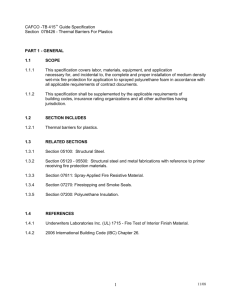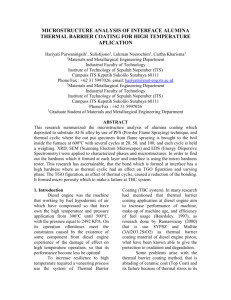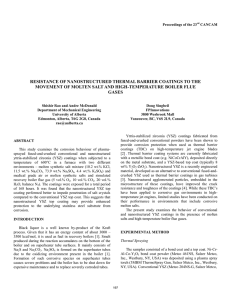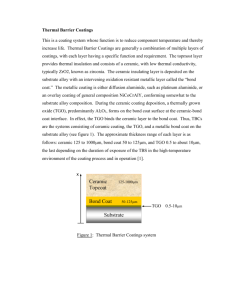Advanced thermal barrier coatings through nanostructure
advertisement
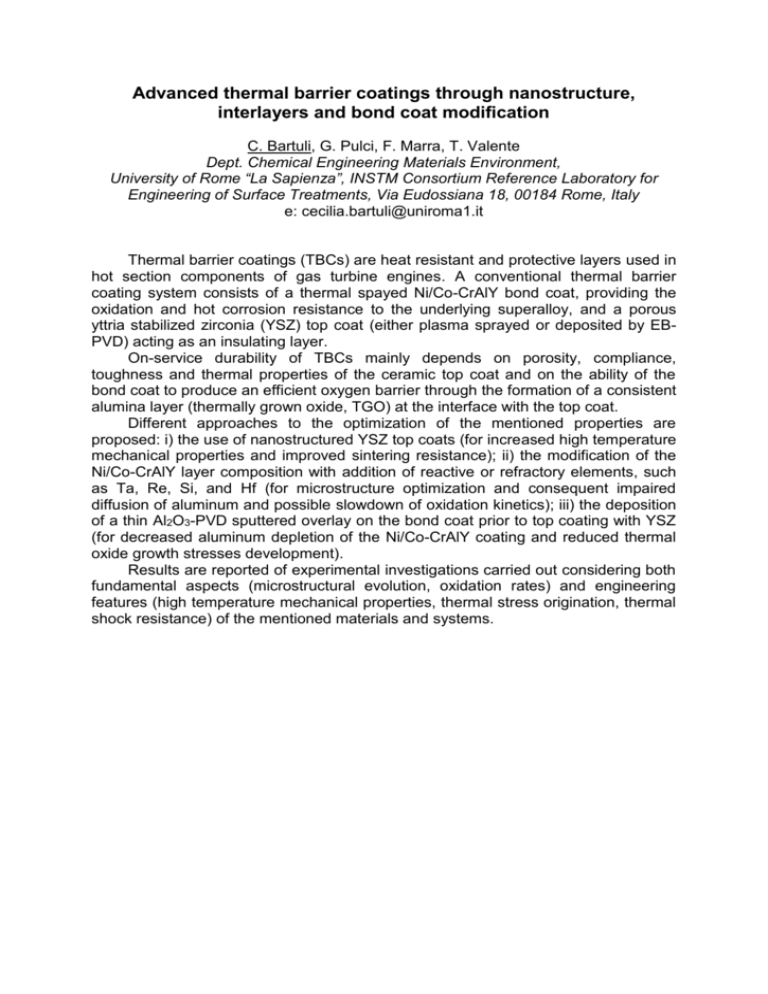
Advanced thermal barrier coatings through nanostructure, interlayers and bond coat modification C. Bartuli, G. Pulci, F. Marra, T. Valente Dept. Chemical Engineering Materials Environment, University of Rome “La Sapienza”, INSTM Consortium Reference Laboratory for Engineering of Surface Treatments, Via Eudossiana 18, 00184 Rome, Italy e: cecilia.bartuli@uniroma1.it Thermal barrier coatings (TBCs) are heat resistant and protective layers used in hot section components of gas turbine engines. A conventional thermal barrier coating system consists of a thermal spayed Ni/Co-CrAlY bond coat, providing the oxidation and hot corrosion resistance to the underlying superalloy, and a porous yttria stabilized zirconia (YSZ) top coat (either plasma sprayed or deposited by EBPVD) acting as an insulating layer. On-service durability of TBCs mainly depends on porosity, compliance, toughness and thermal properties of the ceramic top coat and on the ability of the bond coat to produce an efficient oxygen barrier through the formation of a consistent alumina layer (thermally grown oxide, TGO) at the interface with the top coat. Different approaches to the optimization of the mentioned properties are proposed: i) the use of nanostructured YSZ top coats (for increased high temperature mechanical properties and improved sintering resistance); ii) the modification of the Ni/Co-CrAlY layer composition with addition of reactive or refractory elements, such as Ta, Re, Si, and Hf (for microstructure optimization and consequent impaired diffusion of aluminum and possible slowdown of oxidation kinetics); iii) the deposition of a thin Al2O3-PVD sputtered overlay on the bond coat prior to top coating with YSZ (for decreased aluminum depletion of the Ni/Co-CrAlY coating and reduced thermal oxide growth stresses development). Results are reported of experimental investigations carried out considering both fundamental aspects (microstructural evolution, oxidation rates) and engineering features (high temperature mechanical properties, thermal stress origination, thermal shock resistance) of the mentioned materials and systems.







